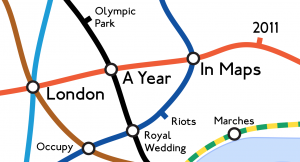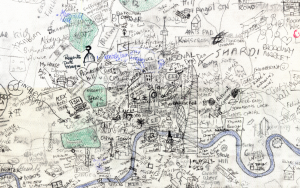‘
The WebGL Globe is an open platform for geographic data visualization. We encourage you to copy the code, add your own data, and create your own.’ – Chrome Experiments
It’s simple, it’s free, it’s open. The
Google Data Arts Team has created a very interesting experiment indeed. What’s different about WebGl Globe is that it focuses on data. The graphic environment encourages the user to think about data visualizations on a globe, in contrast to applications such as google earth and
Webgl Earth which due to the level of detail they offer, the imported by the users data are very diverse and get somehow lost in translation. It may sound limiting, but it marks itself as a tool for global spatial analysis and therefore it becomes ideal for thematic data collection. WebGL Globe can really turn spatial analysis into a fun, visual game. It’s all about an open DIY 3d globe, that can give access to an amazing variety of information and tons of creative ideas.
Doug Fritz of the Google Data Arts Team shared a couple of lines about the project: ”Thanks to WebGL, we’re able to display thousands of moving points at high frame rates by using the user’s graphics processing unit (GPU) for 3D computations. Each state of the globe has its own geometry and we morph between them with a vertex shader, saving precious CPU resources. Additionally, to make the globe look nice, we took advantage of the possibilities of GLSL and created two fragment shaders, one to simulate the atmosphere and another to simulate frontal illumination of the planet”. So, here is what some Java script, and the latest technologies in open source (including WebGL and Html5!) can produce.
Features:
Latitude / longitude data spikes
Color gradients, based on data value or type
Mouse wheel to zoom
More features are under development…
Continue reading »
![]()


